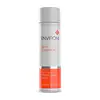What's inside
What's inside
 Key Ingredients
Key Ingredients

 Benefits
Benefits

 Concerns
Concerns

 Ingredients Side-by-side
Ingredients Side-by-side

Water
Skin ConditioningSorbitol
HumectantButylene Glycol
HumectantSodium Lactate
BufferingPanthenol
Skin ConditioningSodium PCA
HumectantNiacinamide
SmoothingEthoxydiglycol
HumectantPropylene Glycol
HumectantGlucose
HumectantLactic Acid
BufferingChamomilla Recutita Flower Extract
MaskingAchillea Millefolium Extract
CleansingOnonis Spinosa Root Extract
AntiseborrhoeicTussilago Farfara Leaf Extract
AstringentRosmarinus Officinalis Leaf Extract
AntimicrobialThymus Serpyllum Extract
Skin ConditioningSalvia Officinalis Leaf Extract
CleansingMelissa Officinalis Leaf Extract
Skin ConditioningEquisetum Arvense Extract
AstringentAlthaea Officinalis Root Extract
Skin ConditioningCyclopia Genistoides Leaf Extract
AntioxidantDisodium EDTA
Sodium Benzoate
MaskingPotassium Sorbate
PreservativeCaramel
Cosmetic ColorantCitric Acid
BufferingWater, Sorbitol, Butylene Glycol, Sodium Lactate, Panthenol, Sodium PCA, Niacinamide, Ethoxydiglycol, Propylene Glycol, Glucose, Lactic Acid, Chamomilla Recutita Flower Extract, Achillea Millefolium Extract, Ononis Spinosa Root Extract, Tussilago Farfara Leaf Extract, Rosmarinus Officinalis Leaf Extract, Thymus Serpyllum Extract, Salvia Officinalis Leaf Extract, Melissa Officinalis Leaf Extract, Equisetum Arvense Extract, Althaea Officinalis Root Extract, Cyclopia Genistoides Leaf Extract, Disodium EDTA, Sodium Benzoate, Potassium Sorbate, Caramel, Citric Acid
Water
Skin ConditioningPropanediol
SolventGlycereth-26
HumectantSalicylic Acid
MaskingTranexamic Acid
AstringentDimethyl Isosorbide
SolventCyclodextrin
AbsorbentAloe Barbadensis Leaf Juice
Skin ConditioningSaccharomyces Ferment Filtrate
HumectantLecithin
EmollientOryza Sativa Lees Extract
Skin ConditioningXanthan Gum
EmulsifyingEthylhexylglycerin
Skin ConditioningButylene Glycol
HumectantSclerotium Gum
Emulsion Stabilising1,2-Hexanediol
Skin ConditioningPullulan
Disodium EDTA
Sodium Hydroxide
BufferingPolyacrylate Crosspolymer-6
Emulsion StabilisingPhenoxyethanol
PreservativeButeth-3
SolventHydroxyacetophenone
AntioxidantSodium Metabisulfite
AntioxidantSodium Benzotriazolyl Butylphenol Sulfonate
UV AbsorberTributyl Citrate
SolventPotassium Sorbate
PreservativeSilica
AbrasiveSodium Benzoate
MaskingCitric Acid
BufferingWater, Propanediol, Glycereth-26, Salicylic Acid, Tranexamic Acid, Dimethyl Isosorbide, Cyclodextrin, Aloe Barbadensis Leaf Juice, Saccharomyces Ferment Filtrate, Lecithin, Oryza Sativa Lees Extract, Xanthan Gum, Ethylhexylglycerin, Butylene Glycol, Sclerotium Gum, 1,2-Hexanediol, Pullulan, Disodium EDTA, Sodium Hydroxide, Polyacrylate Crosspolymer-6, Phenoxyethanol, Buteth-3, Hydroxyacetophenone, Sodium Metabisulfite, Sodium Benzotriazolyl Butylphenol Sulfonate, Tributyl Citrate, Potassium Sorbate, Silica, Sodium Benzoate, Citric Acid
 Reviews
Reviews

Ingredients Explained
These ingredients are found in both products.
Ingredients higher up in an ingredient list are typically present in a larger amount.
Butylene Glycol (or BG) is used within cosmetic products for a few different reasons:
Overall, Butylene Glycol is a safe and well-rounded ingredient that works well with other ingredients.
Though this ingredient works well with most skin types, some people with sensitive skin may experience a reaction such as allergic rashes, closed comedones, or itchiness.
Learn more about Butylene GlycolCitric Acid is an alpha hydroxy acid (AHA) naturally found in citrus fruits like oranges, lemons, and limes.
Like other AHAs, citric acid can exfoliate skin by breaking down the bonds that hold dead skin cells together. This helps reveal smoother and brighter skin underneath.
However, this exfoliating effect only happens at high concentrations (20%) which can be hard to find in cosmetic products.
Due to this, citric acid is usually included in small amounts as a pH adjuster. This helps keep products slightly more acidic and compatible with skin's natural pH.
In skincare formulas, citric acid can:
While it can provide some skin benefits, research shows lactic acid and glycolic acid are generally more effective and less irritating exfoliants.
Most citric acid used in skincare today is made by fermenting sugars (usually from molasses). This synthetic version is identical to the natural citrus form but easier to stabilize and use in formulations.
Read more about some other popular AHA's here:
Learn more about Citric AcidDisodium EDTA plays a role in making products more stable by aiding other preservatives.
It is a chelating agent, meaning it neutralizes metal ions that may be found in a product.
Disodium EDTA is a salt of edetic acid and is found to be safe in cosmetic ingredients.
Learn more about Disodium EDTAPotassium Sorbate is a preservative used to prevent yeast and mold in products. It is commonly found in both cosmetic and food products.
This ingredient comes from potassium salt derived from sorbic acid. Sorbic acid is a natural antibiotic and effective against fungus.
Both potassium sorbate and sorbic acid can be found in baked goods, cheeses, dried meats, dried fruit, ice cream, pickles, wine, yogurt, and more.
You'll often find this ingredient used with other preservatives.
Learn more about Potassium SorbateSodium Benzoate is a preservative. It's used in both cosmetic and food products to inhibit the growth of mold and bacteria. It is typically produced synthetically.
Both the US FDA and EU Health Committee have approved the use of sodium benzoate. In the US, levels of 0.1% (of the total product) are allowed.
Sodium benzoate works as a preservative by inhibiting the growth of bacteria inside of cells. It prevents the cell from fermenting a type of sugar using an enzyme called phosphofructokinase.
It is the salt of benzoic acid. Foods containing sodium benzoate include soda, salad dressings, condiments, fruit juices, wines, and snack foods.
Studies for using ascorbic acid and sodium benzoate in cosmetics are lacking, especially in skincare routines with multiple steps.
We always recommend speaking with a professional, such as a dermatologist, if you have any concerns.
Learn more about Sodium BenzoateWater. It's the most common cosmetic ingredient of all. You'll usually see it at the top of ingredient lists, meaning that it makes up the largest part of the product.
So why is it so popular? Water most often acts as a solvent - this means that it helps dissolve other ingredients into the formulation.
You'll also recognize water as that liquid we all need to stay alive. If you see this, drink a glass of water. Stay hydrated!
Learn more about Water